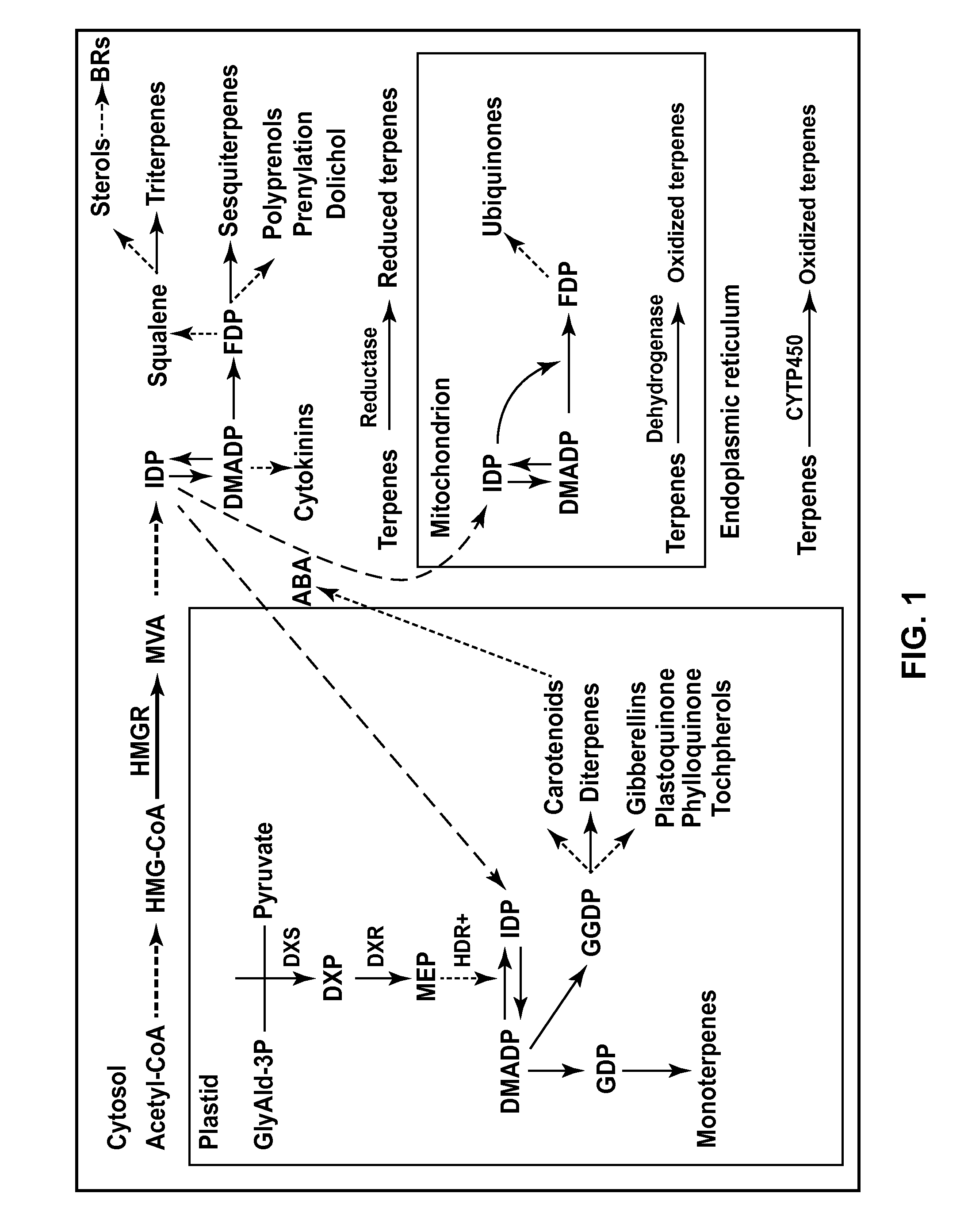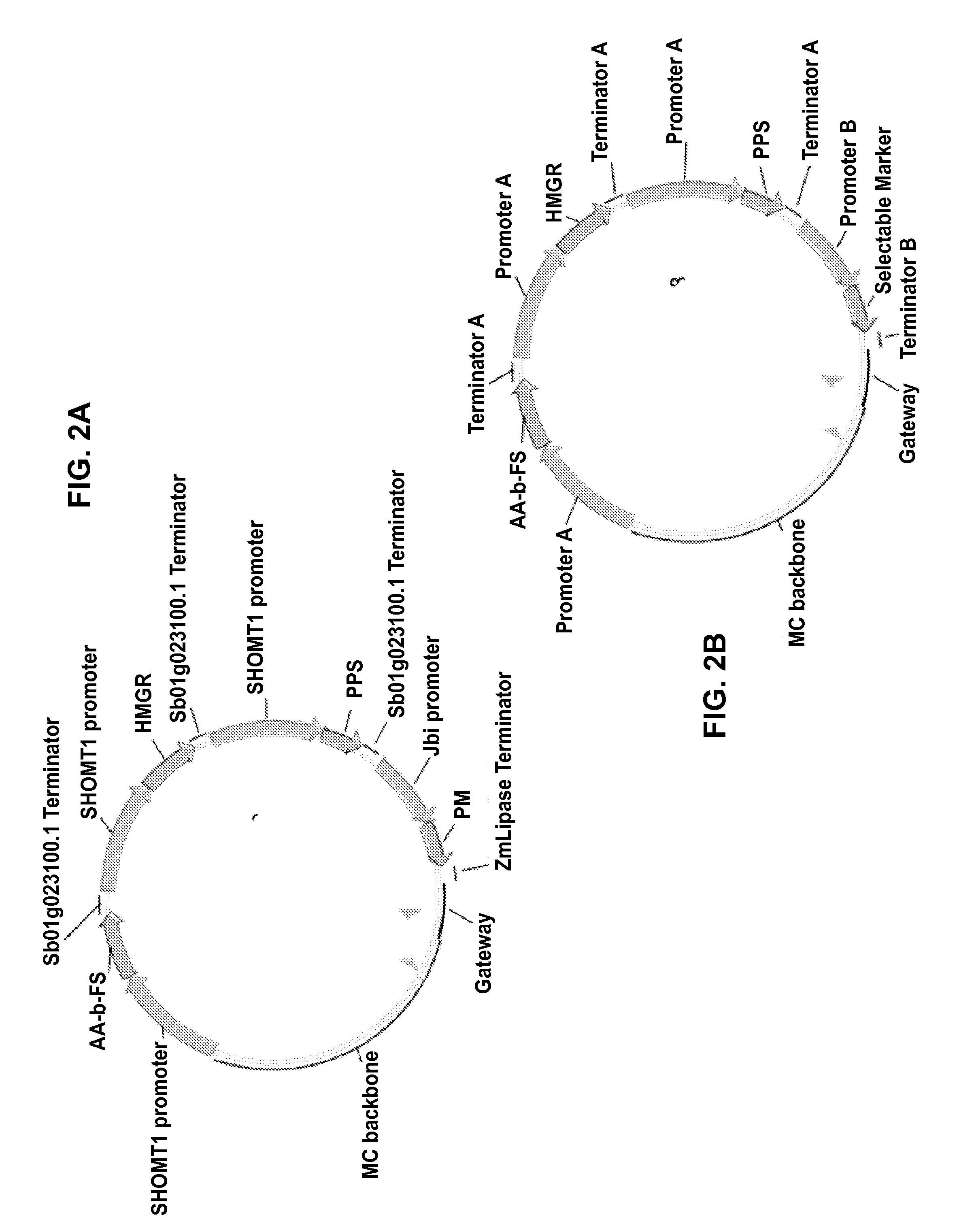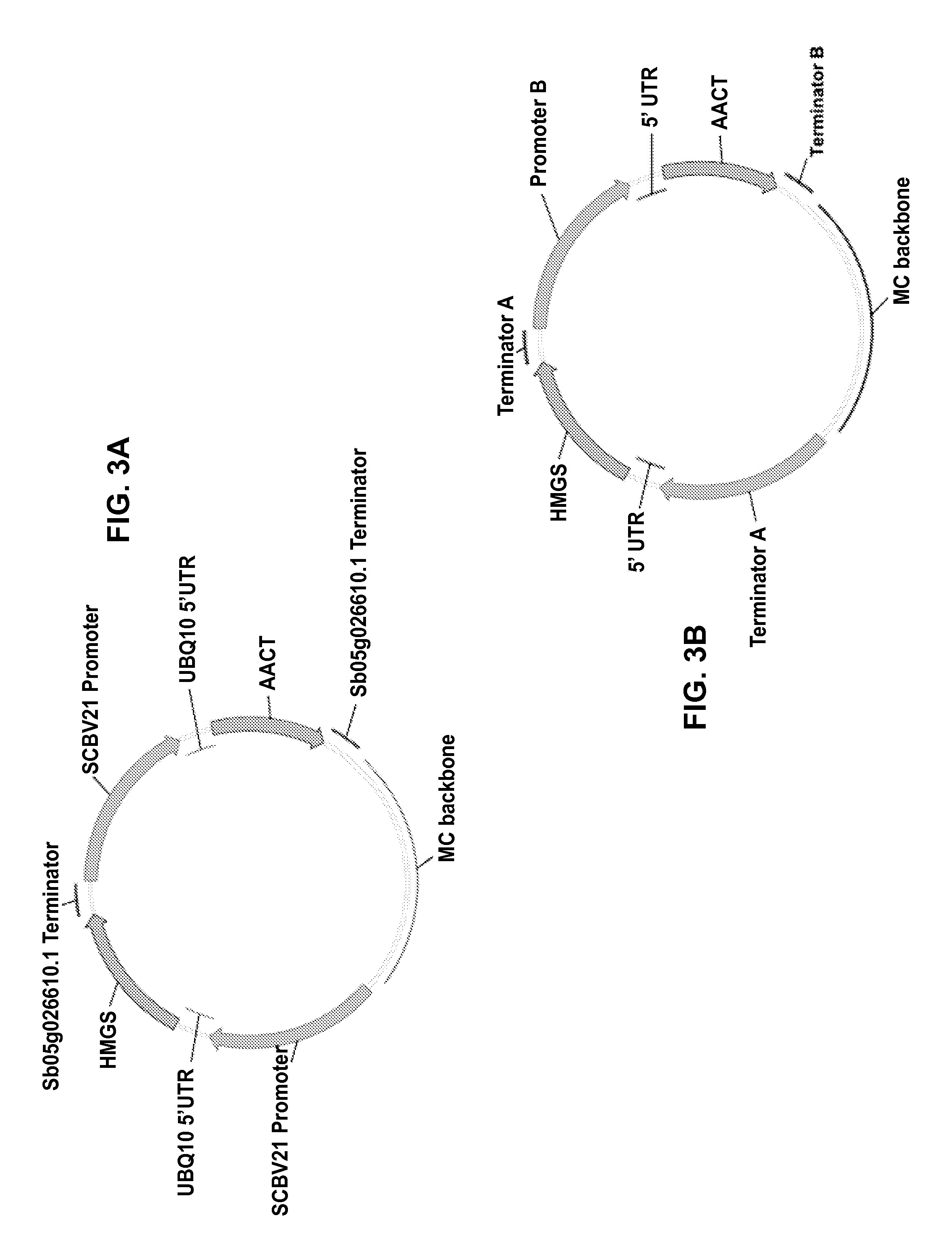Engineering Plants to Produce Farnesene and Other Terpenoids
a technology of farnesene and terpenoids, applied in plant cells, biochemistry apparatus and processes, organic chemistry, etc., can solve the problems of increasing the production of at least one terpenoids, reducing the production efficiency of algal systems, and increasing the production of terpenoids
- Summary
- Abstract
- Description
- Claims
- Application Information
AI Technical Summary
Benefits of technology
Problems solved by technology
Method used
Image
Examples
example 1
Identification of Candidate Genes that Encode for MVA and MEP Pathway Enzymes
[0275]The various enzymes that are involved in the MVA pathway, the MEP pathway, and FSS pathway can be used to produce farnesene were identified in plants or in microorganisms such as E. coli, fungi, and plants.
[0276]The protein sequences of the biochemically characterized genes encoding the MVA or MEP pathway were then used as a query to search publically available protein databases to identify protein homologs. The closest protein sequence with the highest homology to the query sequence from each organism was considered as the putative candidate protein sequence. Tables 1-7 summarize the polypeptides and nucleic acid sequences that were identified and further selected for the embodiments of the invention.
example 2
Quantify Baseline Terpene Profiles in Sorghum Plants to Identify Key Intermediates and Products of Terpene Pathway
[0277]Extraction of terpene from plant samples was carried out using Mini-Bead Beater—16 instrument (Biospec Products, Catalog number 607; Bartlesville, Okla., USA). Polypropylene microvial (7 mL, Biospec Products, Catalog number 3205) was used for extraction. Ground leaf / stem / callus (1.5 g), dichloromethane (3.0 mL, Fisher Scientific, catalog number D151SK-4) and 6 chrome-steel beads (3.2 mm diameter, Biospec Products, Catalog number 11079132c) were taken in the microvial and bead beaten for 90 seconds (30 second×3 times). Vials were cooled in ice bath between two consecutive beating cycles. Volume of supernatant collected after extraction was 2 mL. 1 mL of it was transferred to a 2 mL microcentrifuge tube (VWR International, Catalog number 89000-028; Radnor, Pa., USA) and centrifuged for 10 minutes at 4° C. at 10,000 rpm. 500 microL of the centrifuged solution was tran...
example 3
Determine the Relative Steady-State Transcript Levels of Endogenous Terpene Pathway Genes in Sorghum Normalized to Respective Housekeeping Genes
[0285]Sorghum Microarray Design and Production
[0286]Sorghum microarrays were designed (Affymetrix; Santa Clara, Calif., USA). The probes for ˜27,500 genes were designed based on the whole genome sequence of Sorghum bicolor genotype BTx623, available at Phytozome (Paterson A H, et al. (2009). “The Sorghum bicolor genome and the diversification of grasses.”Nature 457, 551-556). The gene sequences were downloaded from the FTP site of Phytozome and parsed into an instruction file format. Overall, we have 150,337 probe selection regions representing the exons and UTRs. Over 1.4 million probes were designed for 27,500 predicted transcripts designed for 150,000 unique exons as well as the microRNA sequences downloaded from noncoding RNA sequence database (Kin T., et al. 2007. fRNAdb: a platform for mining / annotating functional RNA candidates from n...
PUM
| Property | Measurement | Unit |
|---|---|---|
| energy density | aaaaa | aaaaa |
| energy independence | aaaaa | aaaaa |
| energy content | aaaaa | aaaaa |
Abstract
Description
Claims
Application Information
 Login to View More
Login to View More - R&D
- Intellectual Property
- Life Sciences
- Materials
- Tech Scout
- Unparalleled Data Quality
- Higher Quality Content
- 60% Fewer Hallucinations
Browse by: Latest US Patents, China's latest patents, Technical Efficacy Thesaurus, Application Domain, Technology Topic, Popular Technical Reports.
© 2025 PatSnap. All rights reserved.Legal|Privacy policy|Modern Slavery Act Transparency Statement|Sitemap|About US| Contact US: help@patsnap.com



